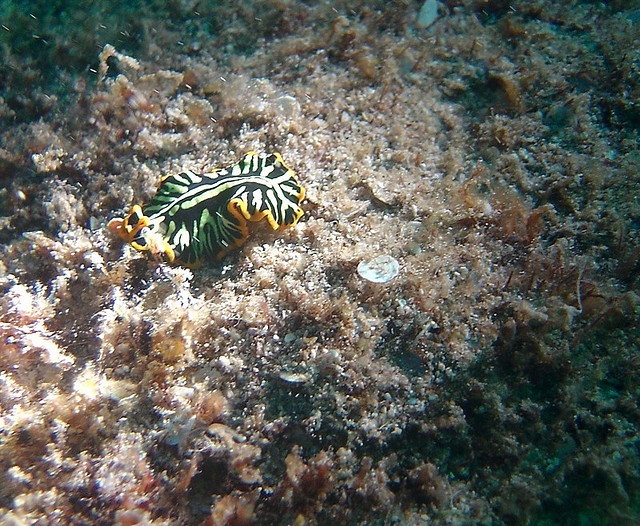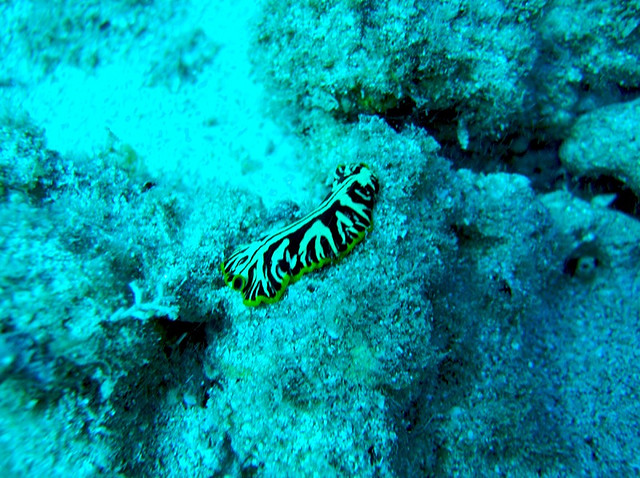Interaction
The Tiger Flatworm has a predatory relationship with its only source of food– the orange tunicate. Because of it’s bright coloration that indicates it’s unappetizing abundance of chemical compounds, the flatworm is rarely preyed upon. Besides the orange tunicate, it also surrounds itself with various sponges and other ascidians. The amphipods, Anamixis hanseni, Leucothoids pottsi, and Leucothoe spinicarpa are also found in the tiger flatworm’s habitat(Sweat 2009).
However, the Tiger Flatworm has an unusual characteristic that can be beneficial to humans. The organism mangrove tunicate, that the flatworm eats, creates the chemical E-743 that is used as an antitumor medication that also helps with sarcoma, breast cancer, ovarian cancer, and melanoma. When the flatworm takes in the tunicate, it also ingests the drug. The presence of this drug helps to repel predators from eating both of these organisms. Unfortunately, it has not been possible yet to produce this drug, and in order for the drug to be harvested, it would take massive amounts of flatworms and tunicates. If we were to harvest that much of the organisms, if would destroy ecosystems and harm the environments. For now it will have to wait until we can successfully produce this compound in large enough quantities to actually treat people.


